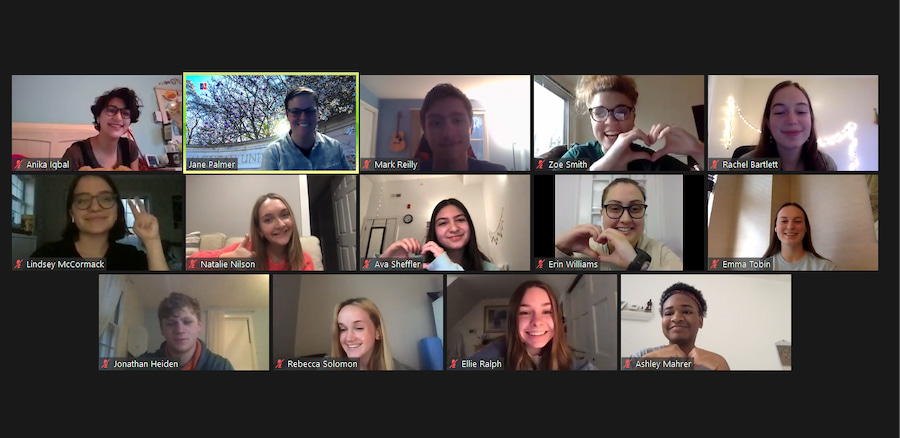What Zoom Classes Taught Faculty
It's a familiar picture for students: sitting at a table or desk, opening a laptop, and logging on to a Zoom class. While not many could have imagined this would become a temporary new normal, most AU students are learning from home this semester — with the exception of those living in DC heading to a mostly quiet campus for a socially-distant study session.
Behind the mosaics of students' faces on computer screens are AU faculty adapting to a new world of teaching. Some professors had the advantage of having previously instructed online. Others were teaching in community-building programs or close-knit lab groups. But one thing faculty share in common is certain: all have and are reshaping their teaching methods to fit an online world that can feel distant and removed.
Wellbeing in the “classroom” and beyond
"Promoting well-being promotes learning," says Jane Palmer, a professor of Justice, Law and Criminology in AU’s School of Public Affairs. "If students are stressed out, they can't engage with the content." Palmer's classes deal with heavy content, from racism to child abuse and trauma. That is why she has tried to incorporate as much as possible a sense of community while being far apart, and allow students to have an outlet to engage with their peers.
Palmer teaches from her work-for-home station in the basement of her home.
Palmer is also director of the Community-Based Research Scholars program (CBRS)– a selective, first-year living-learning community – as well as teaching a Complex Problems seminar, Navigating Childhood. Since both the research project and seminar are community-informed, collaborative and action-oriented, the shift to virtual meant having to pivot the way classes are usually taught.
A change to online learning means adapting to new formats and ways of communication. The Center for Teaching, Research and Learning (CTRL) was created to promote excellence in teaching and scholarship at AU. CTRL provides faculty resources on methods for teaching, research, inclusivity and more — online and in person, with tips on how to transform a face-to-face class day into an online experience.
A living-learning community
One word stands out: communication.
“The constant communication and understanding shows Dr. Palmer sees me as a person, not just as a student,” says Zoe Smith (SPA ‘23), Program Leader for Navigating Childhood. The course focuses on how inequality and public policy affect the experience of childhood and the seminar format includes unique co-curricular experiences, bringing area experts to the classroom to foster connections among ideas and experiences in a living-learning community.
With the community focus first in mind, Palmer managed to give time for her students to get to know each other. “We can get so disconnected so easily,” she says. That is why she instituted online discussion boards, longer Zoom breakout rooms for time to socialize, class games, and Sunday Night meditation meet-ups. Mental health evidently takes the main stage when it comes to the professor’s class teaching priority.
 Students from Palmer's Navigating Childhood class meet for their regular Zoom.
Students from Palmer's Navigating Childhood class meet for their regular Zoom.
Mental health first
Palmer is not alone in setting mental health as a top concern for her classes. Celeste Davis is a professor of Health Studies at AU’s College of Arts and Sciences and also a CBRS faculty member. During the switch to virtual learning, Davis knew she had to rearrange the way her class was taught. “I knew this was no longer a temporary world,” she says.
In Food Justice Matters, a course that explores food justice issues in the 21st century, Davis figured out a different way to present her class. With the expectation of being in a living-learning community, an online block class – 2.5 hours – made it harder to teach her students. “I want to respect students’ time and engagement with one another,” she explains. That’s why she established a 20-minute check-in at the beginning of each class. This gives an opportunity to get to know each other, build community, and discuss current events.
Going forward in a new normal
Both professors place high importance on checking in with students to understand their needs and conveying the message that struggles and challenges are a part of learning. “It’s okay to be struggling – struggles are not character flaws. Understand why and learn how to work around them,” says Davis.
AU students now have access to an additional tool that can help with college success: a personalized wellness platform, You@American, which includes self-checks and evaluations to help each student assess their challenges, set personalized goals, and support emotional wellbeing. Students can set up their profiles at you.american.edu.
